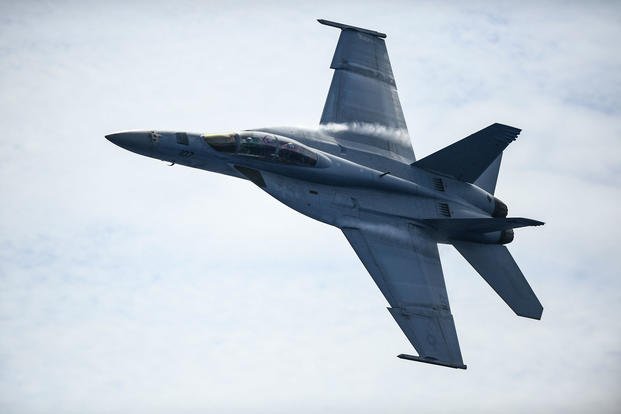Pete Pilcher, a former U.S. Navy F-4 pilot, is a retired test pilot with 34 years of experience with McDonnell Douglas and subsequently The Boeing Company. He served as the director of test for the F/A-18E/F Super Hornet and has flown the F-4 Phantom, F-15 Eagle and F/A-18 Hornet.
I knew I wanted to be a test pilot from the time I was in high school. That's why I earned my degree in aerospace engineering from Texas A&M University, then attended flight training school in Pensacola, Florida, and served as an F-4 pilot in the U.S. Navy.
Reflecting back on my four decades of service in the military and civil military aviation, one of my career highlights remains my time as a test pilot for the F/A-18 Hornet.
As one of several test pilots, I was deeply involved in the jet's development, with the goal of making it so easy to fly that you could spend more time operating the weapon system. The Hornet has a gravitational force-limiting system, so it's extremely difficult to over-stress the aircraft. With no angle-of-attack limitation, the pilot can maneuver the aircraft at will. This is critical for pilots as they conduct missions.
Test pilots and designers worked together to make this a reality. I am extremely proud of the way the F/A-18 flies. The old saying "hard work pays off" is certainly true in the case of the F/A-18 program.
The Super Hornet is the backbone of the Navy's fighter fleet. It has stood the test of time and offers more service life than its competitors. As a testament to its design, the Super Hornets and EA-18G Growlers are currently the only naval aviation programs to achieve an 80% readiness goal -- enabling the F/A-18 to operate at a high operational tempo. However, because of the aircraft's increased use during recent conflicts and threats abroad, the Navy faces a shortfall in its fleet. Such a deficit will be exacerbated without additional F/A-18 funding.
That is why the Navy and the Super Hornet program need congressional support now more than ever.
The F/A-18 Super Hornet is designed to be as easy to maintain as it is to fly. The upgraded Block III model continues this legacy, and it comes with an upgraded 10,000-hour service life to ensure it remains the foundation of our future fleet. The F/A-18 program has proven it is ready today and -- with upgraded capabilities and life cycle costs -- the Super Hornet is poised to continue its winning legacy and its reputation as the reliable tip of the spear for the Navy.
Not only is the F/A-18 one of the most dynamic platforms in the Department of Defense's toolkit, it is also one of the most cost effective. Analyses have shown that the Super Hornet boasts the lowest cost per flight hour of any fighter aircraft in the Navy's inventory at $19,000 a flight hour.
With its track record of cost-conscious success, as well as its reliable supply chain, it's no wonder the F/A-18 continues to be the multi-faceted go-to fighter of the naval fleet.
There are many opportunities for compromise when it comes to budget priorities; however, security and national defense cannot be one of them. It's imperative that Congress invests in proven, capable and successful defense programs that serve our military needs now and well into the future.
I've seen the passion and meticulous work that goes into the production and testing of the F/A-18 Hornet. I've flown this incredible aircraft and continue to be impressed with its capabilities, adaptability and ease of use for our naval pilots. I also believe in its future and that it's a smart investment in our current and future security.
As citizens, we must do our part to impress upon members of Congress the need for funding for the Super Hornet Block III. We must ensure that the lifeblood of the Navy's fighter fleet is fully funded in the coming years in order to avoid a shortfall in our nation's aviation inventory and a compromised national security.
-- The opinions expressed in this op-ed are those of the author and do not necessarily reflect the views of Military.com. If you would like to submit your own commentary, please send your article to opinions@military.com for consideration.















